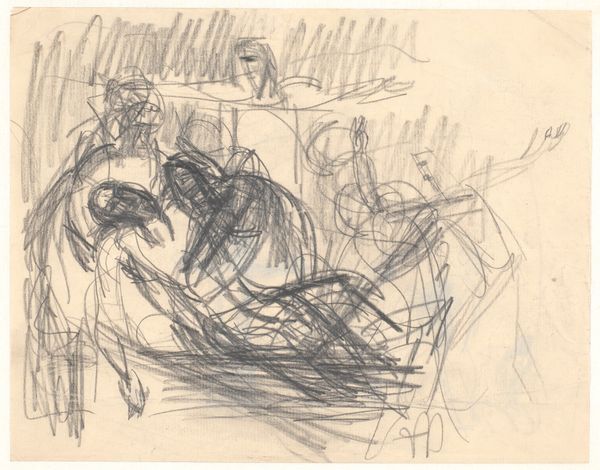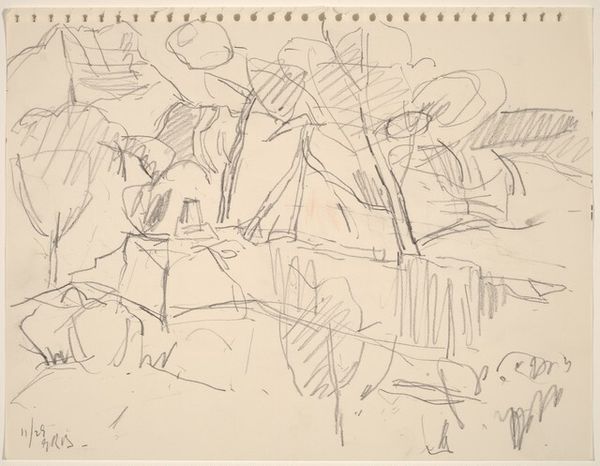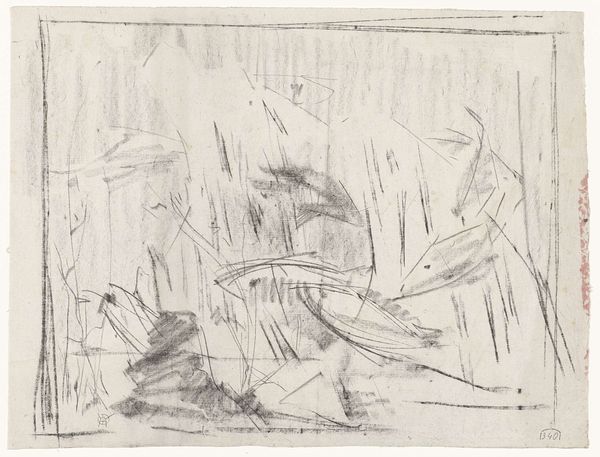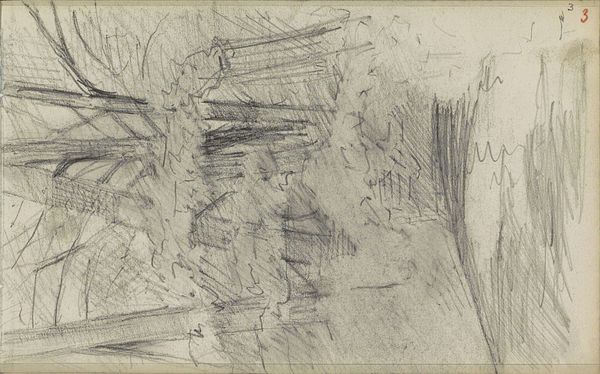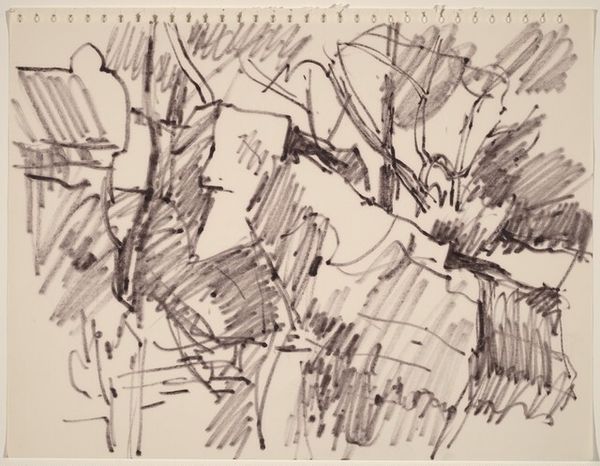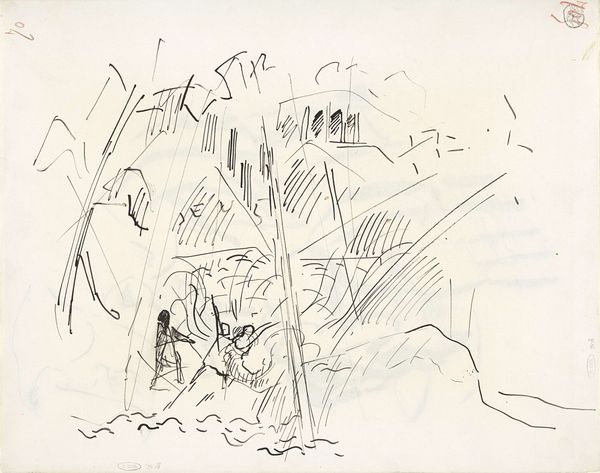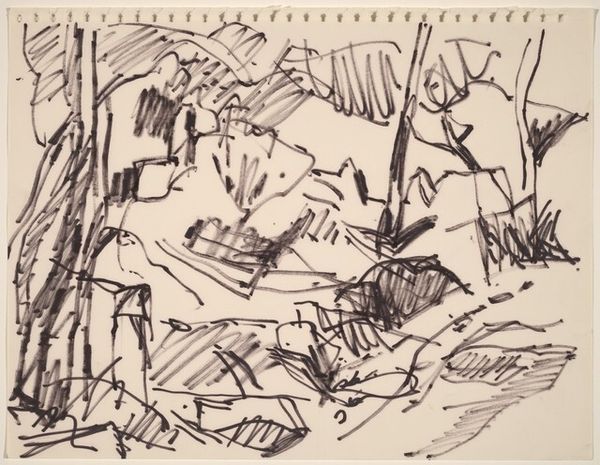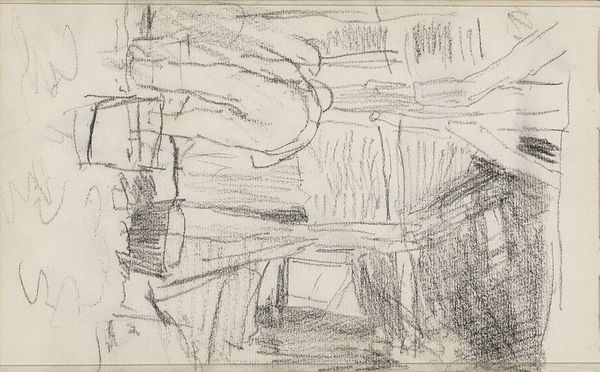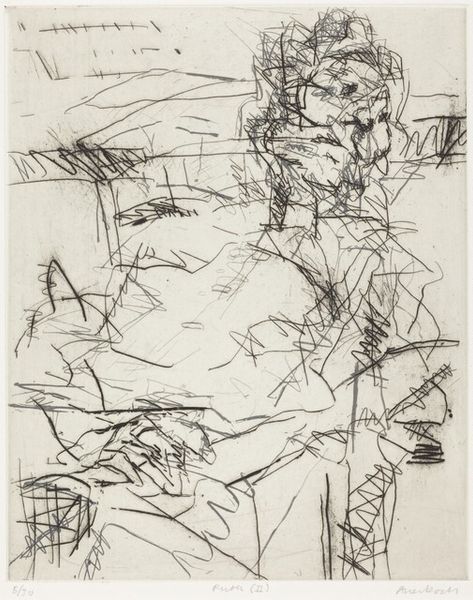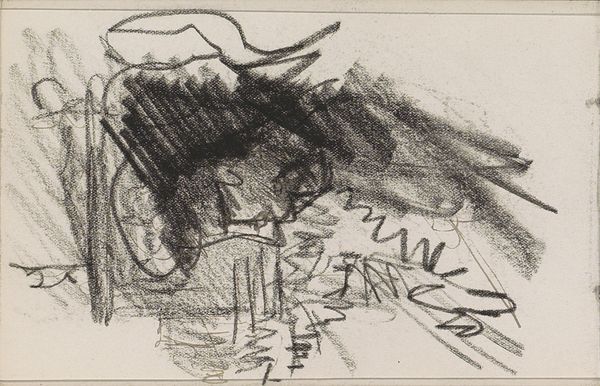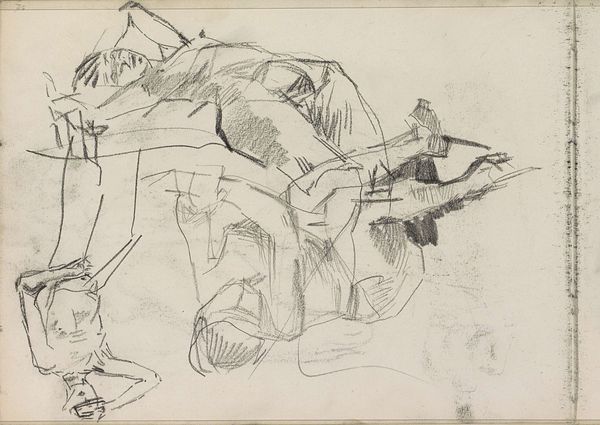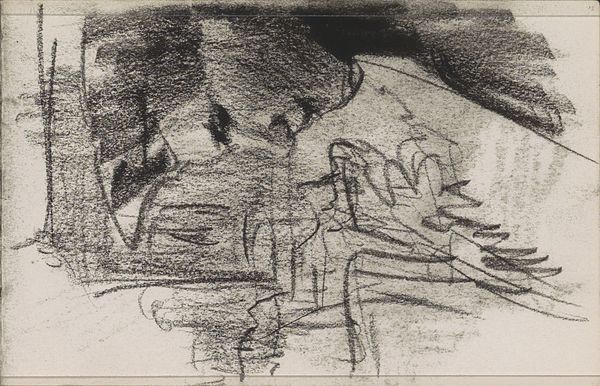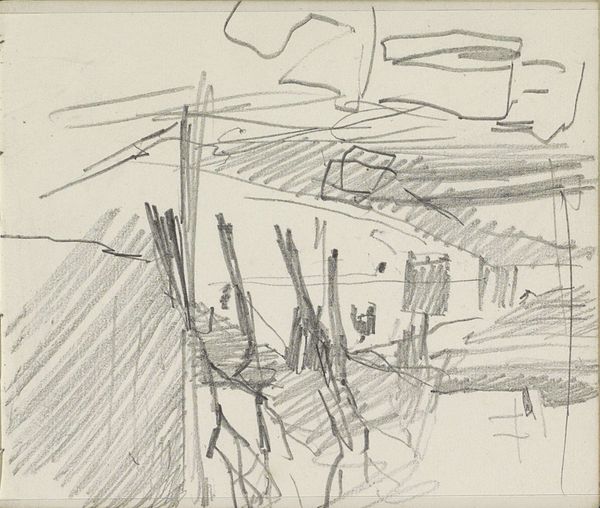
Aquarium met cichliden en drie vissen op de bodem 1876 - 1924
0:00
0:00
gerritwillemdijsselhof
Rijksmuseum
drawing, pencil
#
drawing
#
pen sketch
#
landscape
#
geometric
#
pencil
Dimensions: height 215 mm, width 297 mm
Copyright: Rijks Museum: Open Domain
Curator: This pen and pencil drawing is titled "Aquarium met cichliden en drie vissen op de bodem," or "Aquarium with Cichlids and Three Fish on the Bottom," created by Gerrit Willem Dijsselhof sometime between 1876 and 1924. It’s currently held in the Rijksmuseum. Editor: My initial reaction is one of fluidity and frenetic energy; the sketch feels very active, capturing a moment rather than a static representation. I almost feel like I’m peering into a dynamic underwater world. Curator: Indeed. The looseness of the drawing hints at process, doesn't it? You can see the artist wrestling with the subject, figuring out the composition. There's no pretense of polished finish, it’s the immediacy of observation, made manifest through the directness of the artist's hand. We’re witnessing the translation of the observed into the drawn, aren't we? The labor, made plain, so to speak. Editor: Precisely. And this sketch isn’t just about observation; it teems with visual symbolism, evoking primordial themes. The fish, age-old symbols of life and fertility, are caught in the murky depths, reflecting the mysteries of existence. The repeated oval of their eyes, seemingly looking directly at the viewer, asks what it means to look, to see and be seen within that aquatic world. Curator: That’s an astute point about their gaze—a literal interface made with pen and pencil. Think about the role aquariums played, emerging in popularity during this time as a window into exotic and unseen worlds, not unlike colonial displays of natural wonders that functioned simultaneously to inform and reinforce class and societal hierarchy, as consumption of leisurely entertainment. Editor: A poignant note—reminding us how depictions of nature were invariably enmeshed with broader cultural narratives. This visual artifact whispers cultural understandings about the environment that has implications that extend far beyond the simple visual record. Curator: It really underscores how seemingly simple studies can tell us so much about production, representation, and even, if we allow it, something more vast about consumption and leisure. Editor: Absolutely. Viewing this artwork, then, expands the ways we conceive of art as something active. A symbol always under construction, being used to negotiate culture at large.
Comments
No comments
Be the first to comment and join the conversation on the ultimate creative platform.

